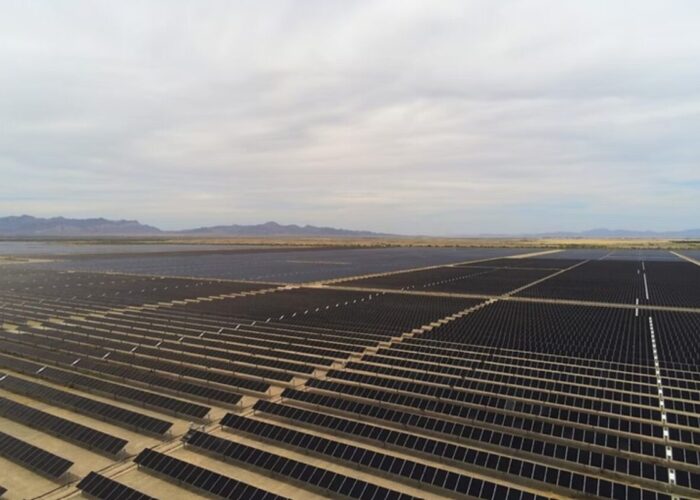
In the US state of Massachusetts, solar PV has become a part of the land rehabilitation process.
In the 1950s, a chemical processing plant owned by W. R. Grace dumped “effluent waste” in lagoons around Acton, eastern Massachusetts, leading to the eventual closure of the plant and the designation of the area as a Superfund site by the US Environmental Protection Agency (EPA), a list of polluted sites in need of rehabilitation.
Try Premium for just $1
- Full premium access for the first month at only $1
- Converts to an annual rate after 30 days unless cancelled
- Cancel anytime during the trial period
Premium Benefits
- Expert industry analysis and interviews
- Digital access to PV Tech Power journal
- Exclusive event discounts
Or get the full Premium subscription right away
Or continue reading this article for free
Earlier this month, US independent power producer (IPP) Syncarpha Capital and engineering, procurement and construction (EPC) firm Distributed Energy Infrastructure (DEI) completed construction work at the Acton project on the site, combining 7.1MW of solar PV capacity and a co-located 4.1MW battery energy storage system (BESS).
This week, the project cleared the final milestone, receiving permission from local utility Eversource to enter operation and completing the area’s rehabilitation from chemical plant to polluted brownfield site to renewable energy project.
“Acton has successfully passed witness testing with Eversource for both PV and ESS circuits, and has received permission to operate at full capacity,” Prateek Tare, EVP and founder at DEI tells PV Tech Premium exclusively this week. “As the project begins post-energisation commissioning and testing to achieve substantial completion, we’re proud to have safely and responsibly brought this site back to life.”
The successful transformation of a Superfund site to a functional solar-plus-storage project that is a contributor of major significance to the brownfield power generation industry is good news for the US solar sector, which is aiming to significantly expand its operational capacity in the coming years, and will require far more land, and a far wider variety of land types, in order to realise these goals.
Working on a Superfund site
Tare describes Superfund sites as “extremely sensitive”, and suggests that considerable time and attention is required for an EPC to install a solar project on land with such a designation.
“Generally, projects like these are extremely sensitive,” he says. “They go through years of review before they come to fruition, so they’re sensitive with neighbours, towns and everyone. With Acton, the fact that it was a Superfund site added three or four more parties … specifically for health and safety.”
The presence of these additional parties, which include local authorities such as the Acton town planning board and the federal-level EPA, meant that the process for securing permits for the project was not necessarily more complicated, but more involved, as there were more parties to satisfy prior to the start of construction.
“Generally, for EPC practice, we have a health and safety programme, and then we create a site-specific safety plan and an environment plan for that site,” he explains. “When it comes to Superfund sites like Acton, you’ve got the town planning board, the town conservation board, the town health board, the facility itself, the state—Mass DEP—and then federal—which is EPA—and all their consultants.
“A lot of it is logical—there’s a lot of overlap sometimes in the logic—but they all have their own requirements; one says ‘test the soil every 300 cubic yards’, one will say ‘500 yards’, so you’ve got to go through that whole programme and spend a lot of effort to figure out how you’re going to do the job months and months before you set foot on site.”
Tare ads that DEI worked with “a third party” in addition to the various levels of permitting organisations, to audit the company’s own work and make sure that it was completing work to as high a standard as possible. He says that while construction at the Acton project only took about six months, working on brownfield sites in general, and Superfund sites in particular, can add to the project construction time as working at these sites tends to create more moving parts for an EPC to work through.
“You might not be able to do it at the pace that you do [for] regular greenfield sites,” he explains. “Every agency has the right intent in mind, and obviously they have the plans in place, but there are so many cooks in the kitchen, so to speak, [and] there’s only enough hours in the day to be on top of things to make sure that the project keeps moving because the project has deadlines.”
Responding to the discovery of asbestos
While the Superfund label brings additional complexities for project development, Tare notes that this was not the most challenging aspect of working on the Acton project. Indeed, even pollution stemming from the site’s original use as a chemicals plant was not a significant challenge, as DEI completed testing for poisonous gases in the area “every day”, and found nothing to impede its work.
Instead, Tare says that the discovery of asbestos underground, while excavating the site, was a surprise that necessitated the most remedial action.
“I’d never done asbestos cleaning before,” he says, highlighting the relative rarity of unexpected asbestos pollution at a solar site. “I know what it is … but as an EPC this was my first experience.
“There was a possibility—the documents in our due diligence told us that something could come up eventually—so as soon as we saw there was something here, we had the third party consultants, the testing consultants and the people who make the plan [and] we knew who we were going to go to as soon as something happened.”
Tare goes on to say that responding to the presence of asbestos did not require wholesale reconsideration of the project, but making smaller changes to the placement of electrical components and wires, putting them above ground to eliminate the need for digging into soil contaminated with asbestos to install them.
Also, looking more long-term, this placement removed the need for operations and maintenance (O&M) staff to get close to asbestos-polluted land to complete their work, as they can instead perform routine checks from the relative safety of ground level.
“Generally you try to design your way around [the challenges],” he says. “Once you have built the plant, your disturbance activities are done … so for this project we put everything above ground and put our wires in such a way that everything is above ground and visible to the O&M folks, the ones who are going to maintain this facility for 20-30 years.”
“Here, because there was no gas issue—it was a physical material issue—material selection wasn’t a big deal. We were designing for mostly above ground, you’re designing for a code and an engineering standard for that, but the pollution-specific point wasn’t an issue.”
Tare points out that actually removing the asbestos, to the point where planned work could continue, took just three days, compared to “six or seven months” to get the plans approved by all of the various stakeholders and government authorities involved in permitting the project, showing how the discovery of asbestos created a greater bureaucratic challenge than a purely engineering one.
Conversely, he notes that dealing with “abandoned buildings” at the site proved to be a greater engineering challenge than dealing with the asbestos. While the buildings themselves had been removed, many of their underground foundations remained in place, limiting the options for the deployment of components that had to be buried underground, such as racking units.
The appeal of brownfield sites
Ultimately, DEI’s work can largely be considered a success. The project has reached commercial operation, and despite delays in the construction work caused by the asbestos issue, Tare notes that Eversource gave the company a fairly “broad” timeline in which to connect the project to the grid, meaning that these delays were not critical to the project’s operation.
This success raises a question, then, as to whether other brownfield sites, and even Superfund sites, should be considered appropriate land for new solar PV installations as the US looks to dramatically increase its operational solar capacity. The trade body, the Solar Energy Industries Association (SEIA), expects the US to add 246GW of new capacity between 2025 and 2030, meaning more land will need to be given over to solar deployments.
The demand for new land for solar projects has also encouraged development of technologies to make better use of land, even water, not considered idea for solar project deployment. In August, Noria started construction at the first US floating PV (FPV) project to use trackers, as developers look to install solar capacity on water as well as land, and in September, Sol Systems completed construction at an agrivoltaics (agriPV) project in Illinois, with agriPV emerging as an efficient way to deploy PV projects without compromising other land uses.
“Superfund sites, landfills [and] brownfields have been around … for a long while, because everyone is trying to make use of land that is unusable,” explains Tare, suggesting that the growing demand for solar capacity will require the deployment of solar projects on a greater range of land types, including brownfield and Superfund sites.
However, he notes that there are likely to be “commercial risks” associated with deployments on brownfield sites that are absent in other project types, as it will cost a developer time and money to dig into an area such as a landfill to properly assess the construction risks present at the site.
“The risks are on the developer, which is there on any project, but [is] a bit more nuanced with these brownfield sites, as you’re not working with virgin land so you’re potentially going to find stuff at the project,” says Tare. “That’s why they take so much longer to perform [inspection] too.”
Yet there is cause for optimism, as the demand for new solar projects, and the fact that, according to Tare, brownfield developments neatly sidestep some of the local opposition that can hamper greenfield developments, could generate waves of support for a new generation of solar projects.
“The good thing is that everyone wants to use the sites,” he says. “[We don’t have] some of the constraints that we have with regular farmland or sites in a town, as people generally don’t come up and say: ‘Hey, don’t take this land away!’”






